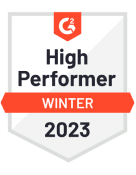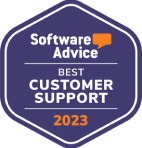A website is an essential part of a company's persona. A great website drives sales, generates interest, and can even create a community of like-minded individuals. Today's websites act as storefronts, essential marketing tools, and provide users information and inspiration.
Websites have different focuses. Ecommerce websites focus on selling products, non-profits focus on raising awareness, and blogs might just share personal anecdotes.
Let us have a look at the different types of websites and their key features to help you select the best website to showcase your work.
Here are the Different Types of Websites :
- Portfolio Website
- Business Website
- eCommerce Website
- CV Website
- Educational Website
- Brochure Website
- Catalog Website
- Non-Profit Website
- Entertainment Website
- Blogs
- Social Media Website
- Web Portal
- Forums
- Informational Website
- News Outlets
There are a myriad of different types of websites. Different websites have different focuses. For example, a business website focuses on sales, whereas a news website shares breaking news. An eCommerce website offers shoppers an easy way to purchase items, and a non-profit website might share events or ways to donate. Here is an list of great ecommerce website templates for your use.
Portfolio Website
Portfolio websites display people's skills and work. These online portfolios usually include a gallery of gorgeous photos that show off the artist's creations. Often, the text will accompany the pictures to describe the work further.
Artists such as photographers, painters, sculptures, and woodworkers often use portfolio websites. Here are a few outstanding artist portfolio websites built with Pixpa for inspiration. Portfolio websites can be used by anyone looking to show off their skills. Website designers, app creators, writers, and graphic designers might have a portfolio website that shows their best projects.
This guide shows you how to make your personal website on your own, step-by-step detailed info.
Portfolios can be used by entrepreneurs seeking additional clients. They are often created in conjunction with a CV to show potential employers and clients their skills. Some are tied to an eCommerce site so that the artist's works can be sold online.
Often, portfolios include a contact link so viewers can get in touch with the creator.

Business Website
Business websites can take various forms. Business websites show the goods and services that the business offers. Business websites might include an eCommerce section where customers can buy products.
Nearly every business operating today will have a website of some sort to tell their story, give directions, and give customers a way to get in touch. Do read our Step-by-Step Guide to building a small business website with examples.
For example, a department store website might give directions to their stores, have an about us page, and have a way for shoppers to buy products right on the website without going to the physical store.
Get inspired by these awesome about us examples from real businesses, and find out how to make your own.
Service businesses, such as hair salons or mechanics, will include information about the employees and offer a way for customers to book appointments directly. In addition, service websites often have a feature that allows the business to manage their calendars and staff availability so customers can book appointments online.
A used bookstore might list their books for sale while encouraging customers to come to the store in person and browse the shelves. A business website does not necessarily need to sell its products online--many are nothing more than a combination sales flyer and yellow page listing. If products are sold online, then it may be combined with an eCommerce website.
eCommerce Website
Business people and entrepreneurs create eCommerce websites to sell products and services. eCommerce websites are online stores and offer innumerable products, from dog toys to fresh meal kits to trendy shoes. Ecommerce sites are not only run by online-only businesses but also by brick-and-mortar businesses looking to offer their products to a wider audience.
Ecommerce sites are great for individuals looking to make money online. You can ship physical items directly from your location or arrange for drop-shipping from a third party.
The eCommerce home page often displays different products, and customers can click on the product and add it to their virtual cart. Customers can continue shopping for items until they are satisfied with their purchases, and then they will go to the checkout page, enter their shipping details, and pay for the items in their cart.
Many e-Commerce websites offer free shipping above a set amount to encourage customers to purchase a minimum amount.
Ecommerce templates make setting up an online store easy, but there are many things that make building these sites complex. For example, there are often technical integrations with fulfilment providers, inventory programs, shippers, and payment processors done on the backend. Here are 15 Top Examples of eCommerce websites built on Pixpa.

CV Website
A CV (curriculum vitae or resumé) website is an excellent tool for job-hunters, freelancers, and contract workers. In the past, job seekers could rely on a few pages of typed text that would be mailed or faxed to potential employers. In today's world, resumes have moved online and give job-seekers a dynamic way to show off their skills and accomplishments.
Job-seekers can add videos of themselves and work examples. In addition, a CV website might include links to other work, a gallery with photos, and text discussing various accomplishments.
A graphic designer can include links to previous projects, include a gallery of their favorite work, and even upload a video of themselves to show their unique accomplishments.
A CV website should include easy ways for potential clients and employers to get in touch with the job-seeker. A CV website gives job-seekers a one-stop place to show off their professional work.
Educational Website
Educational institutions, such as schools, colleges, and universities, all have educational websites. These websites provide information to future students about classes and degrees. Today, many educational institutions also offer online classes on their websites.
A website for an in-person four-year college might display their course catalog, a list of faculty members, and a way to sign up for a college tour. This type of website might also offer information for currently enrolled students, such as on-campus events, exam deadlines, and student life services.
A website for an online-only school will include a list of courses and encourage visitors to sign-up. Students can then take their purchased course right from the school's website. In addition, online schools might offer subscriptions or course bundles. We had featured the best interior design schools in the world with a link to their educational.
Brochure Website
A brochure website is a simple business website. Businesses that want a web presence, but don't want a complicated website, often opt for brochure websites. This type of website usually just has a few pages and offers a way for visitors to contact the business.
Like a paper brochure, it will include a bold picture and text designed to sell the product or service. Brochure websites don't include complicated scheduling software or shopping carts. These websites are usually created by businesses that usually get customers from other methods. They can be used for businesses that don't want to spend a lot of time and money on their web presence.
Catalog Website
A catalog website is an old-school version of an eCommerce website. These websites are simple, quick to build, and scalable. For example, a clothing store might put their clothing catalog online using a catalog website. A hardware store might have various tools and appliances listed. Customers can search for items, add them to their cart, and complete the purchase.
Non-Profit Website
Non-profits include organizations that seek to alleviate social needs. Schools, churches, and animal rescue centres are examples of non-profits.
A non-profit website shows the non-profit's work and often includes a call to action to encourage viewers to contribute to the non-profit work, make a donation, or attend an event.
Non-profit websites might have a gallery feature so visitors can view past events. In addition, non-profit websites often have an About Us page to tell the story of how the organization was founded and what achievements they have made. A non-profit will also provide a way for visitors to get in touch and volunteer with the organization.
Entertainment Website
An entertainment website provides entertainment to visitors. They often offer free content and make their money from ads. Some entertainment websites offer premium content to subscribers. For example, entertainment websites might offer funny comics or interesting stories.
Blogs
The word blog is short for weblog. Individuals use blogs to tell stories and share adventures. Popular personal blogs include topics such as families going on sailing adventures or camping trips or home chefs sharing cooking tips. In addition, individuals use blogs to connect with other like-minded people, stay in touch with family, and share their expertise. Here is a complete guide on how to create a blog, with stunning examples of blog websites built with Pixpa. If you are looking for great blog website design, here's a list of top blog websites that you can look at.

Businesses use blogs, too. In fact, blogs are an excellent way for businesses to use search engine optimization (SEO) to attract new customers. Businesses write informative articles using popular search terms that match their expertise. Individuals searching for answers can then find the business blog and then be introduced to the business. Often business websites include a blog function.
Social Media Website
A social media website allows visitors to connect online with other like-minded people. Individuals can share stories, pictures, and videos from their day and respond to the pictures and stories their friend network posts. Visitors can often join interest groups where they can share their expertise and ask questions from like-minded individuals.
Social media websites often draw visitors who will check the website daily, if not multiple times a day.
Web Portal
A Web Portal is used to provide information to specific users. Usually, visitors must log in to a Web Portal. Banks, universities, and businesses use web portals. Customers can use a web portal to sign into their bank and view bank statements. Students can access their class records after signing in to their university's web portal. Employees working remotely might sign in to a specific portal on their company's website to access documents.
Web portals often include complicated programming to ensure the site's information stays protected and secure.
Forums
A community forum allows members to ask and answer questions. These forums are popular with enthusiasts who might only meet other enthusiasts online. Popular forums discuss niche topics such as specific makes of cars, popular TV shows, video games, sailing, or even plant-growing.
Informational Website
Informational Websites are designed to convey information. They usually are not created to be a source of income but focus on conveying accurate information. These websites include wikis and encyclopedias.
Informational websites usually provide a way for users to search the website to find just the right information. They are similar to blogs but provide in-depth articles and expert information.
News Outlets
News outlets such as newspapers, TV channels, and cable channels all have websites to share breaking news and in-depth stories. Media websites usually make money through advertising. Some media websites charge subscriptions to allow visitors to read certain premium news stories. Some news outlets have print versions and on-air channels, and some are online only.
What Type of Website Are You Looking For?
When you are planning your website, it is important to think about your goals. If you are selling a product online, it makes sense to create an eCommerce website. Think about your overall vision and plan how you can best meet your needs and your customer's needs. Do read our step-by-step guide on how to design a website from scratch.
Why Do You Need a Website?
In this modern era, every business and enterprise needs a website. Websites are great ways to market your product, your skills, or your cause. Websites are the modern equivalent of a storefront. Their design impacts the way a customer or visitor sees your brand and interacts with you. Websites can drive sales, provide information, and foster relationships. Get inspired by these outstanding portfolio websites by photographers and creators around the world.
What are the Types of Web Design Are Used on the Most Popular Types of Websites?
Website designs can be as simple as an online brochure or as complicated as an eCommerce platform with thousands of products.
Static Page Layout
Static webpages have a fixed width and don't resize. If you view the web page on a tablet or phone, the text will be harder to see. This type of design doesn't have much code, so it loads fast and is cheaper to build.
Liquid Page Layout
This type of webpage expands or shrinks when the browser window is resized. Columns are built using percentages rather than fixed numbers.
Responsive Layout
A responsive layout makes webpage viewing as easy as possible. This type of website is easily viewable on phones, tablets, and different devices. Responsive designs can also show viewers optimized photos and videos. For example, if the user is on a slow connection, the website will show lower resolution photos and videos to that user in order to optimize download times.
What are the Different Parts of Websites?
Websites usually include the same parts, whether you are building a business website, a portfolio website or a non-profit.
Header
The Header runs across the top of the website. The header includes the company's logo and menu. The menu includes clickable links to other pages on your website, such as Home, About Us, Contact Us.
Body
The body of your webpage is where the main action takes place. For example, the home page of an eCommerce website might show the most popular products in the home page's body.
Sidebar
A sidebar runs vertically down the side of a website. For example, sidebars might include a CTA, a link to a blog page, or a special offer.
Feed Content
Feed content is a list of updated content. For example, it often includes blog posts or the newest products.
Call to Action
Websites usually include a Call to Action (CTA). This drives visitors to complete an action, such as buying a product, signing up for a class, coming to an event, or volunteering for a non-profit.
Buttons
Buttons are easy ways to link to other parts of your website. For example, a call to action often encourages visitors to click a button to be taken to the action page.
Internal Links
Internal links take users to another page on the website. For example, a product might include a link to another compatible product.
Forms
Forms are common on websites. Popular forms include newsletter sign-ups or shipping forms.
Footer
The footer is at the bottom of the webpage. It often includes information such as a phone number, contact us button, and copyright information.
Social Media Links
Websites often display links to different social media platforms.
Conclusion
In our connected world, websites are a huge part of a company's presence and success. Well-designed and run websites drive sales, give information, and connect people. The most popular types of websites engage their users and connect buyers with sellers. When building a new website for your enterprise, think about your goals for your website. Then, use your goals to create a website that meets your needs and shows the world your vision.














